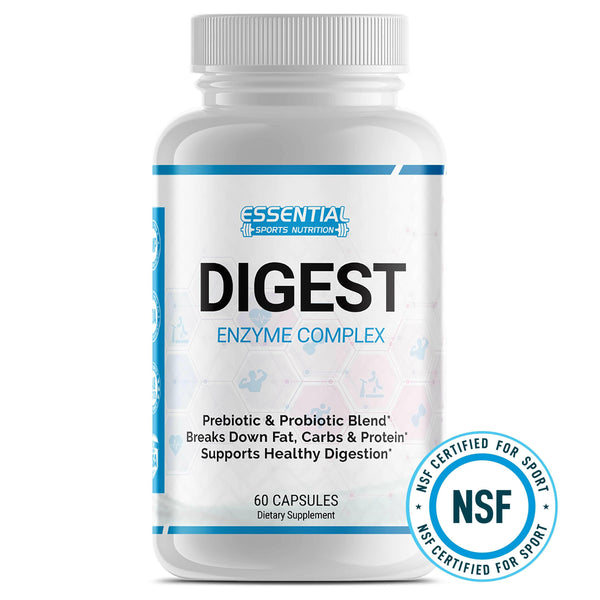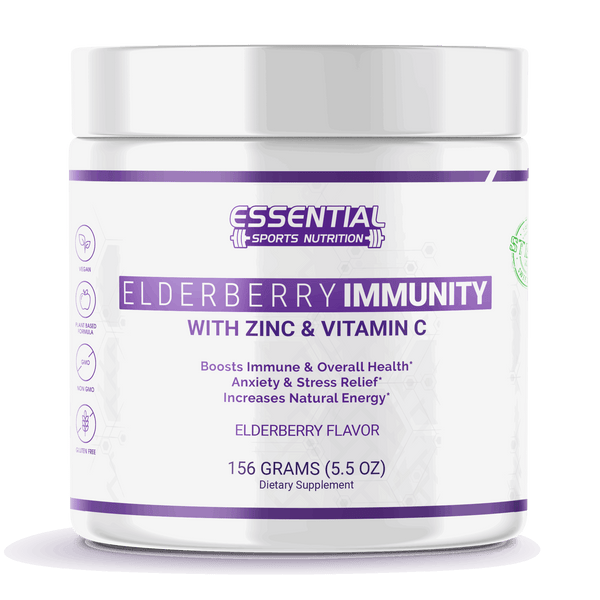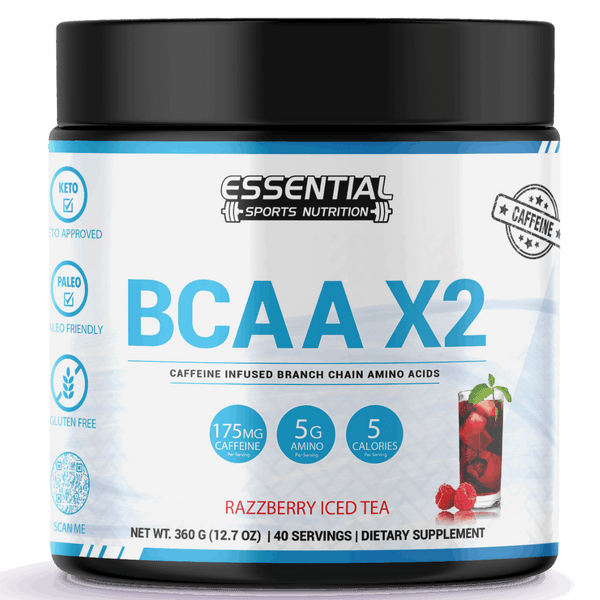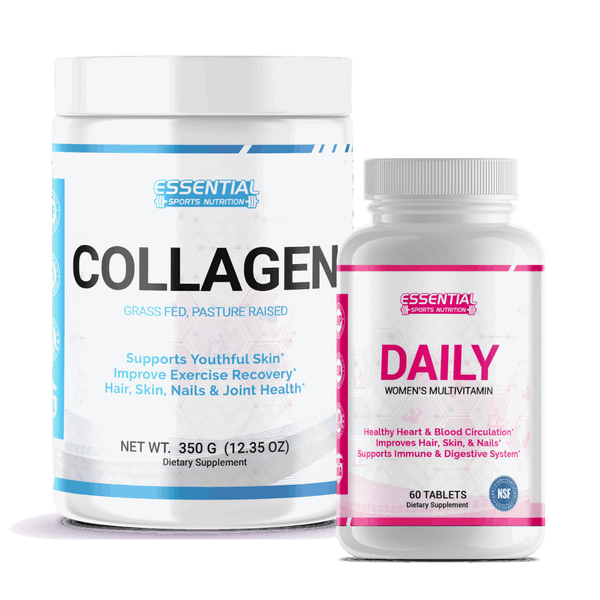The DASH Diet for High Blood Pressure: A Meal Plan To Reverse Hypertension
Are you looking for a heart-healthy way to lower high blood pressure? The DASH diet plan, known as Dietary Approaches to Stop Hypertension, could be the key to managing your hypertension diet. This evidence-backed way of eating emphasizes nutrients that are essential in the fight against high blood pressure. Incorporating foods rich in potassium, calcium, and magnesium while reducing sodium and unhealthy fats makes the DASH diet a balanced and accessible path to better health.

You don't need to seek out special grocery items or worry about complicated recipes; the DASH Diet for High Blood Pressure integrates smoothly into your daily routine with familiar and readily available foods. Tailoring your diet to your caloric needs while enjoying a variety of flavors turns adopting a healthier lifestyle from a chore to a pleasurable experience. Begin your journey towards a healthier heart and lower blood pressure today with the DASH diet.
Key Takeaways
-
Embrace a heart-healthy diet with the DASH diet plan to effectively lower high blood pressure.
-
Easier management of hypertension diet through readily available, nutrient-rich foods.
-
Personalize your dietary approaches to stop hypertension based on daily and weekly nutritional goals.
-
Enjoy a lower blood pressure by emphasizing foods high in potassium, calcium, and magnesium.
-
No special foods needed—incorporate the DASH diet into your lifestyle with ease and convenience.
Understanding Hypertension and the DASH Diet Connection
A closer look at high blood pressure, or hypertension, reveals why a heart-healthy eating plan is critical. By embracing healthy eating for high blood pressure, like the DASH diet, you can significantly mitigate the health risks associated with this silent condition.
What Is Hypertension and Its Risks?
Hypertension occurs when the force of blood against your artery walls is too high consistently, often resulting in damage to your blood vessels and organs. This condition is notorious for its subtle onset, typically presenting few noticeable symptoms while gradually increasing the likelihood of heart disease and stroke.
Introduction to DASH: Dietary Approaches to Stop Hypertension
The DASH diet, an acronym for Dietary Approaches to Stop Hypertension, is a lifeline for those seeking a proven approach to heart-healthy eating. By focusing on foods that are rich in essential nutrients, the DASH diet stands out as a robust defense against rising blood pressure levels.
How Does the DASH Diet Affect Blood Pressure?
The DASH diet exerts its beneficial effects on blood pressure by leveraging nutrients that aid in the relaxation and dilation of blood vessels. It encourages the consumption of whole grains, low-fat dairy, fruits, and vegetables, while limiting foods high in sodium, sugar, and saturated fats.
| Food Group | Benefits for Blood Pressure | DASH Diet Servings |
|---|---|---|
| Whole Grains | Rich in fiber, helps in weight management | 6-8 servings per day |
| Fruits | High in potassium and fiber, lowers pressure naturally | 4-5 servings per day |
| Vegetables | Source of potassium, magnesium, and fiber | 4-5 servings per day |
| Low-fat Dairy | Provides calcium and proteins, reduces arterial pressure | 2-3 servings per day |
| Lean Proteins | Promotes heart health, lessens blood vessel strain | 2 or fewer servings per day |
By adopting the DASH diet, you're not just selecting an eating plan; you're making a conscious decision to improve your cardiovascular health—which could be the best decision you've ever made for yourself.
Essential Nutrients in the DASH Diet for High Blood Pressure

Embarking on the journey of healthy eating through the DASH diet, you'll discover a treasure trove of nutrients that help lower blood pressure. This isn’t about simply eating less sodium. It’s a comprehensive overhaul addressing the powerhouse minerals and life-sustaining fibers and proteins your body truly needs to combat hypertension effectively as part of dietary approaches to stop hypertension.
The Importance of Potassium, Magnesium, and Calcium
These three musketeers of minerals play a pivotal role in your heart health. Potassium helps balance sodium levels and eases tension in blood vessel walls. Magnesium works in concert, assisting in the relaxation of blood vessels, while Calcium is crucial for the proper contraction and relaxation of the heart and blood vessels.
| Mineral | Benefits | Food Sources |
|---|---|---|
| Potassium | Regulates fluid balance, relaxes blood vessel walls, moderates blood pressure | Bananas, Potatoes, Spinach |
| Magnesium | Helps with blood vessel relaxation, aids in energy production | Almonds, Black Beans, Avocado |
| Calcium | Essential for heart and blood vessel function, helps with muscle function | Dairy products, Broccoli, Tofu |
Role of Fiber and Protein in Managing Hypertension
Fiber found in whole grains plays a double agent role in your food. Not only does it help you feel full longer, preventing overeating, but it also supports steady blood sugar levels and promotes a healthy digestive system. Meanwhile, protein from lean meats and dairy endorses your body’s ability to repair itself and stabilize blood sugar levels, which indirectly can help manage blood pressure.
-
Fiber-rich foods: Oats, Barley, Quinoa
-
Quality Protein sources: Chicken Breast, Low-fat Yogurt, Lentils
Foods to Favor: Building Your DASH Diet Plan
Embracing the DASH diet means more than just occasional heart-healthy diet choices—it's about making a sustained commitment to the foods to eat on the DASH diet. Discovering delicious and nutritious DASH diet recipes that align with your taste preferences is key to the diet's success.
Fruits and Vegetables: Pack your plate with a rainbow of fruits and vegetables. They're not only vibrant and delicious but are foundational in providing the vitamins and minerals essential to your DASH diet plan.
Whole Grains: Integrate a variety of whole grains like brown rice and whole-wheat pasta into your diet. These foods are excellent sources of fiber and can help maintain a consistent energy level throughout the day.
Lean Proteins: Choose proteins like poultry, fish, and plant-based options to meet your nutritional needs without the added saturated fat found in some meats.
Legumes, Nuts, and Seeds: These are not only great for snacking but also add a nutritious crunch to salads, yogurts, and side dishes.
Low-fat Dairy: Incorporate low-fat or fat-free dairy products to ensure you obtain the calcium and vitamin D necessary for strong bones while conforming to the DASH diet’s guidelines.
These choices create a framework that supports a heart-healthy diet, ultimately working to keep your blood pressure in check. To help visualize what a DASH-friendly meal might look like, take a look at the table below that pairs food types with examples:
| Food Category | Examples |
|---|---|
| Fruits | Apples, Bananas, Berries, Citrus Fruits |
| Vegetables | Spinach, Kale, Bell Peppers, Carrots |
| Whole Grains | Quinoa, Oats, Brown Rice, Whole Wheat Bread |
| Lean Proteins | Chicken Breast, Turkey, Salmon, Tofu |
| Legumes/Nuts/Seeds | Lentils, Almonds, Chia Seeds, Black Beans |
| Low-fat Dairy | Skim Milk, Greek Yogurt, Low-fat Cheese |
For an enjoyable eating experience that benefits your cardiovascular health, incorporate these diverse and flavorful options into your daily routine. Remember, the road to a healthy heart is paved with variety and moderation.
Find inspiration for your next meal and experience the health benefits of the DASH diet today. Whether you're cooking at home or seeking out DASH-friendly options while dining out, there's a world of tasty possibilities awaiting your discovery.
Sodium and Hypertension: How the DASH Diet Helps

One of the pillars of the DASH diet is its strategic approach to reduce salt intake, a significant factor in controlling hypertension. Embracing a low-sodium diet per the DASH diet sodium recommendations can have a profound effect on your health, especially when it comes to managing blood pressure levels. But understanding the nuances of sodium consumption is crucial as you embark on this heart-healthy journey.
Understanding Sodium Limits on the DASH Diet
The DASH diet offers two levels of sodium reduction to cater to different health needs. The standard DASH diet limits sodium to no more than 2,300 milligrams a day, which is a great starting point if you're looking to gradually reduce your sodium intake. However, for those looking to make more significant changes, the lower-sodium version of the DASH diet reduces the daily limit to 1,500 milligrams. Aligning with these guidelines can significantly lower your blood pressure and, subsequently, reduce the risk of heart disease.
Tips for Reducing Sodium in Your Diet
Dropping the salt doesn't mean dropping the flavor. Here are some practical tips to help you stick to a low-sodium diet:
-
Read nutrition labels closely and choose foods with the lowest sodium content.
-
Season your meals with herbs and spices instead of salt.
-
Prioritize fresh vegetables and fruits over their canned counterparts, which often contain added sodium.
-
Opt for home cooking where you can control the amount of salt used.
-
When dining out, don't hesitate to ask for meals to be prepared without added salt.
By following these simple yet effective strategies, not only can you meet the DASH diet sodium recommendations, but you'll also discover a world of natural flavors that benefit your palate and your health.
Managing Portions and Serving Sizes on the DASH Diet
Embarking on the DASH diet means adopting a regime that emphasizes moderation and balance. Determining how much to eat from each food group can make all the difference in your journey to a healthier heart and a controlled blood pressure. Let's dive into establishing your daily calorie needs and detailing the serving sizes that correspond with a well-rounded DASH diet.
Determining Your Daily Caloric Needs
To tailor the DASH diet to your lifestyle, you must first understand what your daily calorie needs are. These needs are unique to each individual and depend on factors such as age, sex, weight, height, and level of physical activity. By aligning your calorie intake with your personal needs, you're laying the groundwork for an effective and sustainable balanced eating plan.
Recommended Servings from Each Food Group
A balanced eating plan on the DASH diet typically involves consuming a certain number of servings from each food group. For a 2,000-calorie diet, for example, there are specified target amounts for grains, fruits, vegetables, dairy, and meats. Adhering to these can help you manage calorie intake while assuring that you get the nutrients vital for health and well-being.
Here is a breakdown of the food group servings recommended for a 2,000-calorie DASH diet:
| Food Group | Servings per Day |
|---|---|
| Grains | 6-8 |
| Vegetables | 4-5 |
| Fruits | 4-5 |
| Dairy Products (Low-Fat or Fat-Free) | 2-3 |
| Lean Meats, Poultry, and Fish | 6 or fewer |
| Nuts, Seeds, and Legumes | 4-5 per week |
| Fats and Oils | 2-3 |
| Sweets and Added Sugars | 5 or fewer per week |
By focusing on the serving size on the DASH diet for each food group, you can ensure you are consuming a variety of nutrients critical for your health. Balancing these servings throughout your day supports not only your weight management goals but also contributes to a reduction in hypertension risk, keeping you on track for a heart-healthy future.
Beyond Diet: Lifestyle Changes to Enhance DASH Diet Benefits

While a heart-healthy diet is essential, combining the DASH diet with other lifestyle changes for blood pressure can lead to even greater health gains. From exercise and hypertension to stress reduction techniques, let's explore how to maximize the impact of your efforts towards achieving optimal blood pressure levels.
Importance of Exercise in Lowering Blood Pressure
Integrating physical activity into your daily routine is a non-negotiable factor for anyone looking to manage blood pressure. Not only does regular exercise strengthen your heart, allowing it to pump blood more efficiently, but it also aids in maintaining a healthy weight — a key element in preventing and managing hypertension.
Limiting Alcohol Consumption for Blood Pressure Management
It's no secret that excessive alcohol consumption and blood pressure are closely linked. By following the recommended guidelines on alcohol intake, you can prevent unnecessary spikes in your blood pressure and support the overall effectiveness of the DASH diet.
Stress Reduction Techniques to Complement the DASH Diet
Managing stress is yet another essential piece of the puzzle. Chronic stress can be a contributor to high blood pressure; therefore, incorporating stress reduction strategies can enhance the quality of your diet and bolster your body's ability to regulate blood pressure.
| Lifestyle Factor | Recommendations | Benefits for Blood Pressure |
|---|---|---|
| Exercise | At least 30 minutes of moderate-intensity exercise, most days of the week | Strengthens heart, improves blood circulation, assists in weight control |
| Alcohol Intake | No more than two drinks per day for men and one for women | Prevents blood pressure spikes, supports heart health |
| Stress Management | Regular use of techniques like deep breathing, meditation, and yoga | Reduces the potential impacts of stress-induced blood pressure changes |
Heart-Healthy DASH Diet Recipes to Get You Started

Embarking on the DASH diet journey can be both exciting and nourishing for your heart. A trove of heart-healthy meals awaits to ensure your transition to a healthy-eating plan is flavorful and satisfying. Think of your kitchen as a creative space where the harmonious blend of nutrition and taste comes to life, giving rise to an array of DASH diet recipes that are easy to follow and effortlessly integrate into your daily regimen.
Whether you're seeking a robust breakfast to kickstart your day, a nutritious lunch to carry you through, or a sumptuous dinner to wind down, the DASH diet offers versatile options. Let's explore some killer recipes that would not only tickle your taste buds but also align perfectly with your health goals:
-
Oatmeal with a Twist: Begin your day with a warm bowl of oatmeal, adorned with slices of bananas and a sprinkle of heart-friendly nuts like almonds or walnuts.
-
Classic Hummus With Veggies: For lunch, indulge in a creamy hummus spread served with an array of crunchy vegetables – perfect for a quick and heart-healthy midday meal.
-
Ravishing Roasted Salmon: Come dinner, treat yourself to a beautifully roasted salmon fillet, seasoned with herbs and served alongside a quinoa and spinach medley.
To further assist you in crafting your heart-healthy menu, the table below encapsulates the essence of the DASH diet, highlighting the ingredients, nutrients involved, and their benefits:
| Meal Time | Recipe | Main Ingredients | Key Nutrients | Health Benefits |
|---|---|---|---|---|
| Breakfast | Oatmeal with Fruit | Whole grain oats, Banana, Almonds | Fiber, Potassium, Magnesium | Lower cholesterol, Blood pressure control |
| Lunch | Hummus Plate | Chickpeas, Olive oil, Raw veggies | Protein, Healthy fats, Vitamins | Heart health, Satiety, Blood sugar regulation |
| Dinner | Roasted Salmon | Salmon, Quinoa, Spinach | Omega-3 fatty acids, Iron, Protein | Reduce inflammation, Boost brain health |
Celebrate the bounty that nature provides and allow the DASH diet to be your guide towards a happier, healthier heart. Remember, a hearty meal is one that supports your well-being while tantalizing your palate!
Conclusion: Customizing the DASH Eating Plan for Your Lifestyle

Embracing the DASH diet means adopting a flexible approach to your nutritional needs—a heart-healthy blueprint that can be sculpted to fit your unique lifestyle and health goals. Whether you are managing dietary needs due to health conditions, personal ethics, or nutritional preferences, the DASH eating plan variations provide ample flexibility. The key lies in maintaining the diet's core principles while making smart substitutions and adjustments that reflect your individual requirements.
Variations for Different Dietary Needs
The DASH eating plan is versatile enough to accommodate a range of dietary needs. If you're following a vegetarian diet, for example, you can easily swap out animal proteins for plant-based alternatives without sacrificing nutrition or taste. Vegans can also embrace DASH by choosing dairy substitutes like almond or soy milk. For those targeting weight loss, adapting the calorie content to fit a reduced caloric intake while still focusing on the nutrient-rich foods of the DASH diet can help you reach your weight goals in a healthy manner. With customizing DASH diet strategies, your meals can be as varied and exciting as your tastes demand.
How to Adapt the DASH Diet When Eating Out
Even dining out can remain within the compliance of your DASH eating plan. When outside your own kitchen, make informed menu choices—opt for dishes high in vegetables, whole grains, and lean proteins. Don't hesitate to ask how the food is prepared and request modifications, like dressing on the side or dishes prepared without added salt. By being proactive and aware of your dietary needs, eating out on the DASH diet becomes a seamless part of your overall lifestyle, without the stress of straying from your health objectives.
The DASH Diet for Heart-Healthy Eating FAQs
Q: What is the DASH diet?
A: The DASH diet stands for Dietary Approaches to Stop Hypertension. It is an eating plan designed to help lower high blood pressure and promote overall heart health.
Q: How does the DASH diet work?
A: The DASH diet focuses on increasing the intake of fruits, vegetables, whole grains, and lean proteins while reducing the consumption of sodium, saturated fats, and cholesterol. By following this balanced eating plan, individuals can lower their blood pressure and improve their heart health.
Q: What are serving recommendations on the DASH diet?
A: The DASH diet emphasizes specific serving recommendations for different food groups. For example, it suggests consuming 4-5 servings of fruits, 4-5 servings of vegetables, 6-8 servings of grains, and 2-3 servings of dairy per day.
Q: Is the DASH diet easy to follow?
A: Yes, the DASH diet is relatively easy to follow as it encourages the consumption of whole, unprocessed foods that are readily available in most grocery stores. It also provides flexibility in food choices and can be adjusted to meet individual preferences.
Q: How can following the DASH diet help lower your blood pressure?
A: By promoting the consumption of nutrient-rich foods and limiting the intake of sodium and unhealthy fats, the DASH diet can help reduce high blood pressure. Additionally, the emphasis on fruits, vegetables, and whole grains provides essential nutrients that support heart health.
Q: Can following the DASH diet improve heart health?
A: Yes, following the DASH diet can improve heart health by lowering blood pressure, reducing cholesterol levels, and promoting overall cardiovascular well-being. The emphasis on healthy eating habits and nutrient-dense foods contributes to a heart-healthy lifestyle.
Q: What are some examples of healthy foods included in the DASH diet?
A: Healthy foods recommended on the DASH diet include fruits, vegetables, whole grains, lean proteins, nuts, seeds, and low-fat dairy products. These foods are rich in essential nutrients and promote heart health.




























